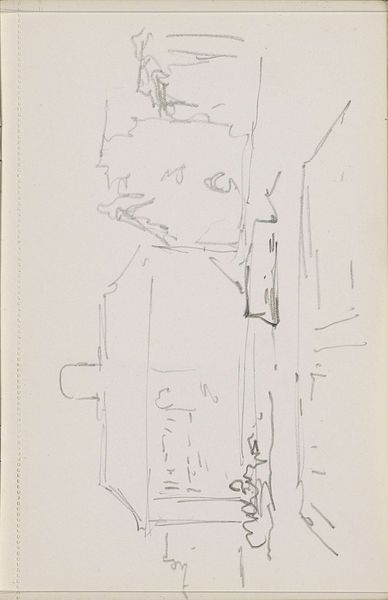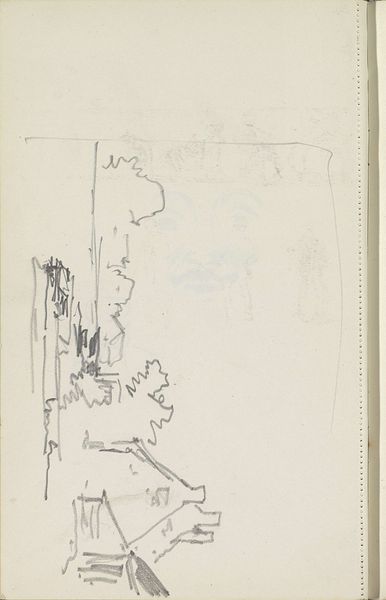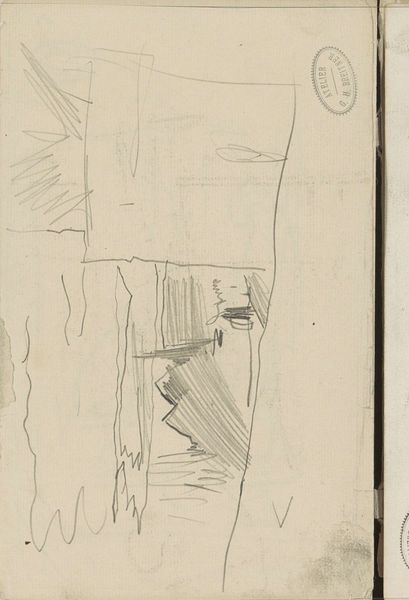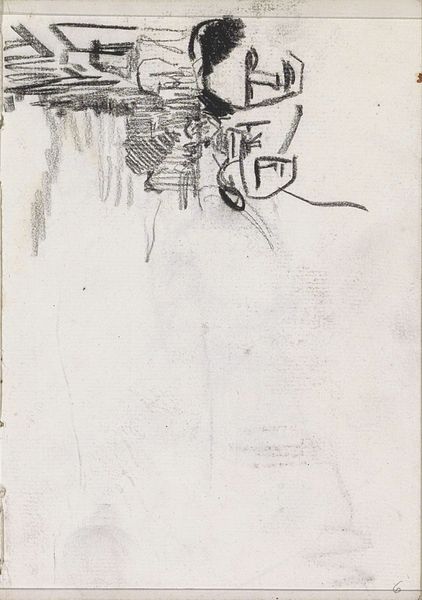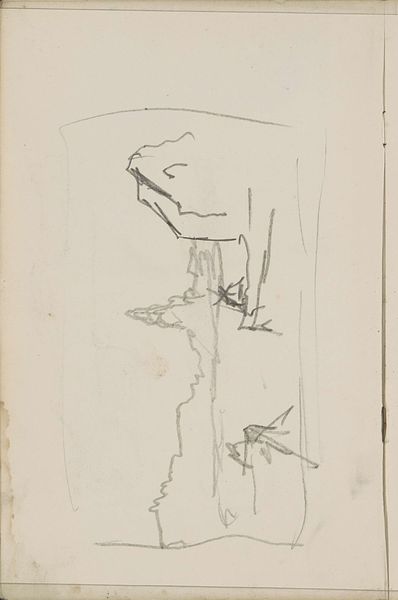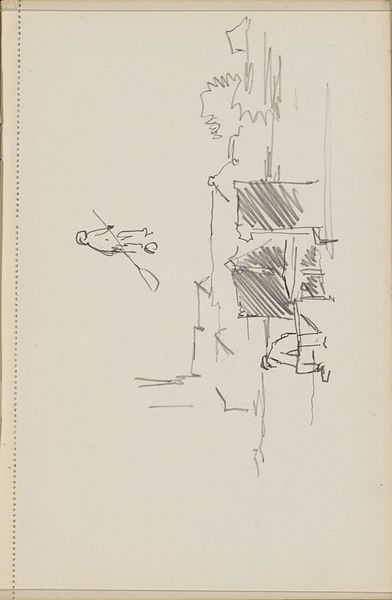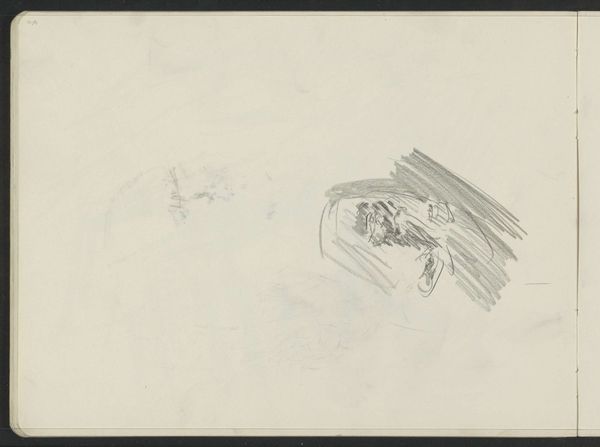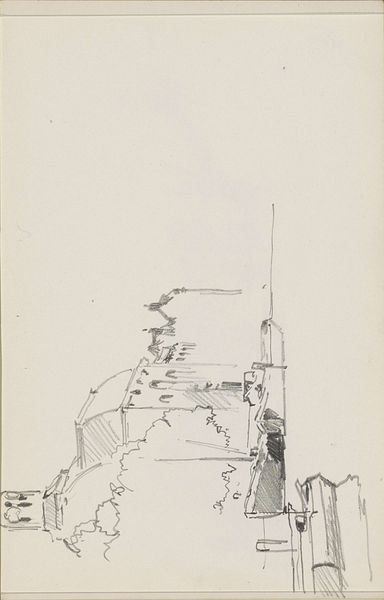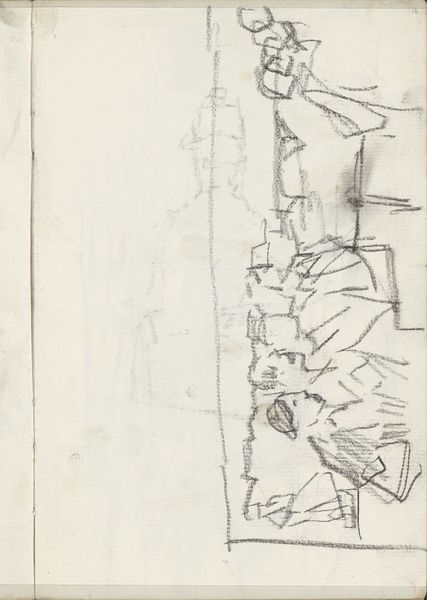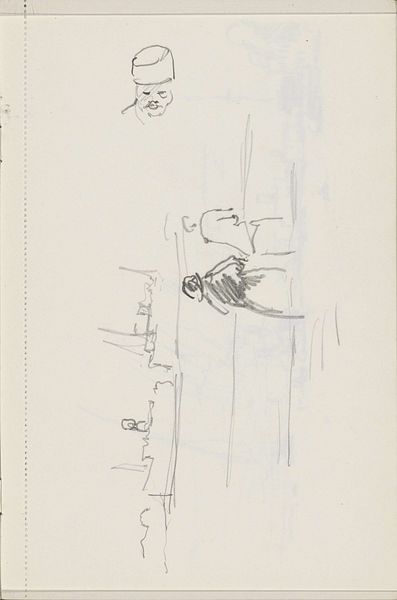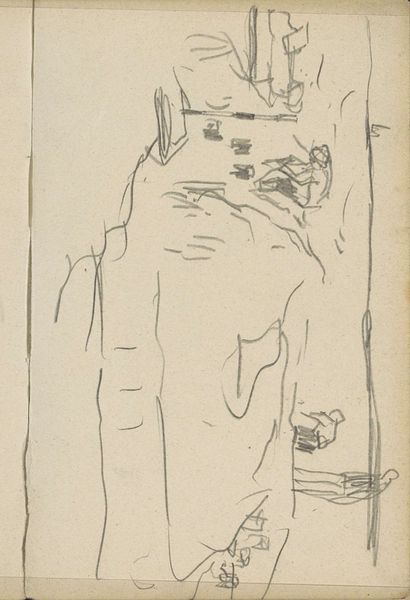
Copyright: Rijks Museum: Open Domain
Curator: This evocative drawing is entitled "Rij huizen aan een waterkant," or "Row of houses on a waterfront," attributed to Cornelis Vreedenburgh. It's a pen and ink sketch on paper, made sometime between 1890 and 1946, now held here at the Rijksmuseum. What impressions does it give you? Editor: Well, immediately it strikes me as a ghost. Like someone took a photo of a bustling canal-side scene, and then, bit by bit, the details faded, leaving only the barest, almost anxious lines behind. It's the artistic equivalent of a half-remembered dream. Curator: An intriguing take. I'm drawn to how Vreedenburgh, using such minimal means, captures the essence of a Dutch waterside. Note how the dark ink blots could represent windows or perhaps reflections, their starkness creating a sense of depth, or maybe hidden stories within those buildings. They could signify memories clinging to the brick. Editor: Hidden stories indeed! And maybe those abrupt, jagged lines – are they the wear and tear of time? The impermanence of our constructed environments reflected in the quick, nervous strokes. Is it meant to remind us that even the most solid structures will eventually succumb? A bit gloomy, I admit. Curator: Perhaps not gloomy, but realistic. Waterways, especially in the Netherlands, are constantly battling against decay and entropy. Vreedenburgh's economical lines capture that continuous struggle, that tension between human creation and nature's persistent reclaiming. And consider this could have been produced during two World Wars, adding other layers of human experience and resilience. Editor: Right. There's also a very palpable energy in those scribbled strokes. This feels like a fleeting impression captured quickly, rather than a carefully planned study. It speaks of lived moments, of sketching on the go and letting feeling override fidelity. You can see those spots, blots of the ink as evidence. Imperfect beauty. Curator: Precisely. The imperfection elevates it. Vreedenburgh isn’t just showing us houses; he’s conveying a mood, a sense of place, a fleeting glimpse of a reality ever in motion, decay and rebirth, right there in that balance. Editor: Well said. I entered thinking ghost story and I leave thinking about resilience and time, and that even the sparsest rendering can have resonance far exceeding what you see.
Comments
No comments
Be the first to comment and join the conversation on the ultimate creative platform.
